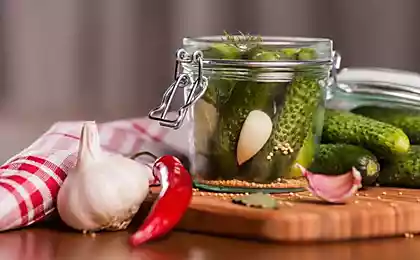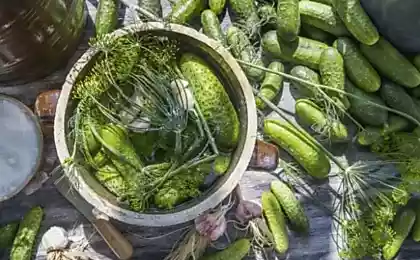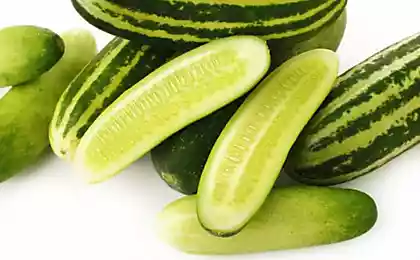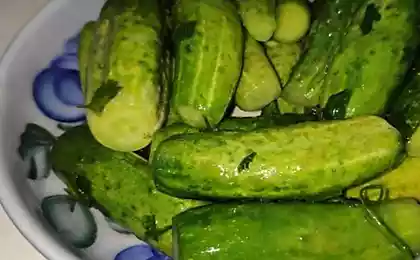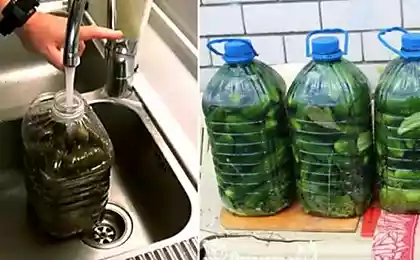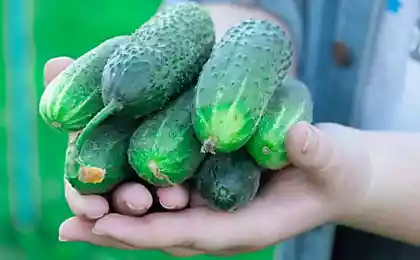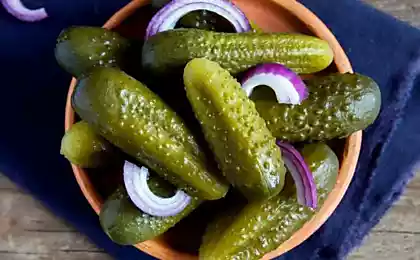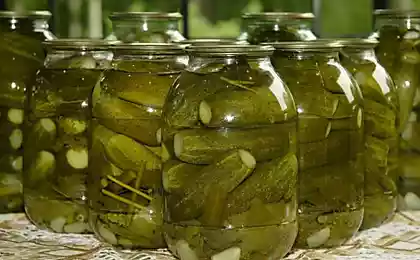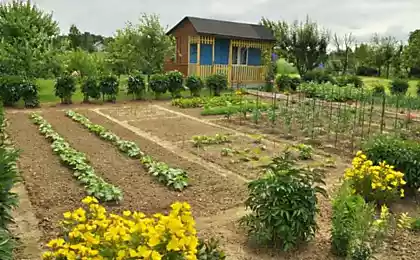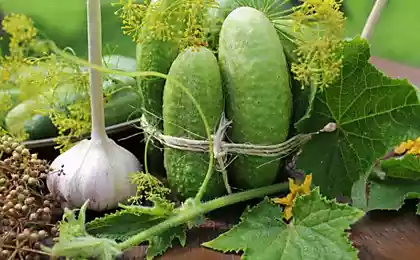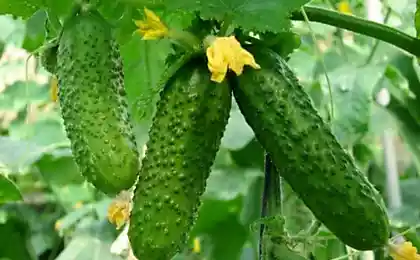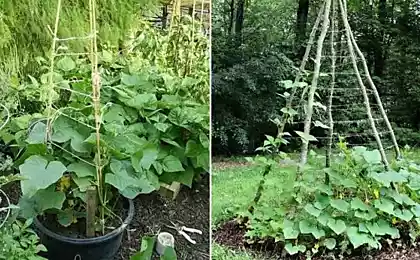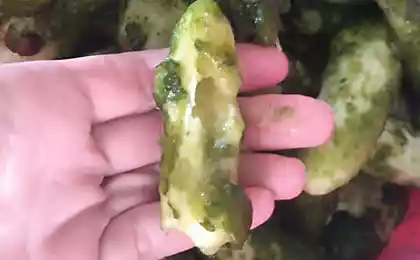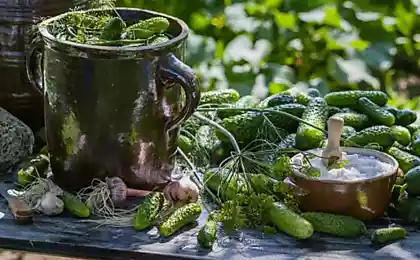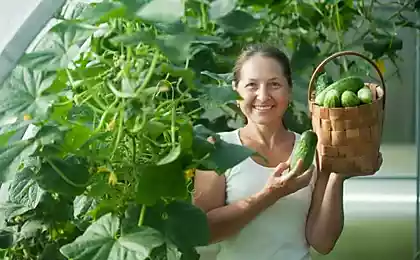462
Growing cucumbers is tricky
Seventy nine million eight hundred thirty eight thousand eight hundred ninety nine
Grow cucumbers on tricky Of all of the Cucurbitaceae family genealogy cucumber the most mysterious. In Latin agoras — so immature. Really tasty only the young cucumber and Mature malosedobnaya.
Cucumbers — the most difficult to grow in culture. They can be salad, Zabolotnogo, canning type. If you sow them next, then, when the plants are intertwined, it is very easy to mix up the fruit. For fresh consumption, it does not matter, but if this mixture "to put under the lid", then after a couple of months, the cucumbers will have to be thrown away.
Sort by appointment varieties of cucumbers vary greatly in their biological characteristics. Judge for yourself — some are grown in greenhouses, others in open ground. For some, requires Chelopechene, other (parthenocarpic) form fruits without pollination.
But there are varieties hybrid with a female type of flowering for pollination you need to plant pollinating varieties. For completeness I should add that in recent years there has been virtually complete replacement of varieties of cucumbers. Almost gone from the gardens of the honored veterans of vyaznikovskiy-37, Murom-36 grown in 1943. Their place was taken by Sunny, Volgodonskiy, Pet, Pasamonte etc.
What varieties to choose to grow? In the greenhouse it is best to plant self-pollinating varieties. Short: Micron, Roma, Filippok, Favorite, Teacher, Success, Three tanker, Soldier, Nightingale, the old Russian, Sancho, Panza, Rita, Merchant, Bouquet, Stork, Hector, Dobrynya, Noble. Fruit of medium length (14-18 cm): Apocalypse, Ascona, Bleek, Hermann, Moth. For pickling you need varieties of far Eastern selection: Instant, Cascade, Hub, far East 27, far East-6, Lotus, Graceful. They are not amazed about powdery mildew, but like the humid air. Also good for pickling cucumbers ripening: Altay, Baby, Aquarius, Moravicki gherkin, Monastic.
How to grow fruits In the open ground for 16 consecutive year I grow cucumbers developed method. What is it? First: under the beds of cucumbers annually use the new location. Second: the cultivated land is divided into 2-3 beds with a width of 75-80 cm, length 150-250 cm, width of the aisle between the beds in 20 cm Beds leveled, and then planted the cucumber seeds in four rows with spacing in each row of 12-15 cm to a depth of 1-1,5 see
After planting the ground is well watered and all the beds are covered with a film of old, but more or less transparent and without holes. The edge of the film carefully press down with metal rods, pipes, or simply dropped the ground, so that a film could not penetrate the cold air.
Under the film is warm and humid, cucumbers germinate quickly and begin to prop up the film. So the seedlings are not burned from the sun blade, make cross-cuts on the tape over each plant. Gently pull them to the surface of the film, with the root of the cucumber remains under the film. After that, watering from a watering can without the spray every 6-7 days, sometimes more often.
When the cucumbers will grow so that will cover the hole in the foil and baste them will be uncomfortable, watering is carried out directly on cucumber leaves. The water finds the cracks in the film and goes into the ground, feeding the roots of the plants. Additionally, to improve the microclimate and growth of cucumbers since the beginning of the flowering of all the garden walls around the perimeter of the boards or flaps with a height of 25-30 cm.
Advantages the advantage of this method? The roots of cucumbers are in a constant moisture and warmth in any weather. Unlike the greenhouse, pollination occurs by wind, bumblebees and bees. Watering is done two times less than in the open ground. Instead of new you can use the old exhaust tape. Cucumbers grow in purity on the surface of the film or in the future — on the fence. Due to the early planting and growth of the crop is removed at an earlier date. And overall productivity compared to existing methods is increased by 50 percent or more. This method gives excellent yields of the varieties Volgodonskiy-231, sun, Lotus, Shanghai, Hubba, Chinese, climbing, Erofey. published
Source: hozvo.ru/news/vegetable_garden/Vyiraschivayuogurtsyipo-hitromu/
Grow cucumbers on tricky Of all of the Cucurbitaceae family genealogy cucumber the most mysterious. In Latin agoras — so immature. Really tasty only the young cucumber and Mature malosedobnaya.
Cucumbers — the most difficult to grow in culture. They can be salad, Zabolotnogo, canning type. If you sow them next, then, when the plants are intertwined, it is very easy to mix up the fruit. For fresh consumption, it does not matter, but if this mixture "to put under the lid", then after a couple of months, the cucumbers will have to be thrown away.
Sort by appointment varieties of cucumbers vary greatly in their biological characteristics. Judge for yourself — some are grown in greenhouses, others in open ground. For some, requires Chelopechene, other (parthenocarpic) form fruits without pollination.
But there are varieties hybrid with a female type of flowering for pollination you need to plant pollinating varieties. For completeness I should add that in recent years there has been virtually complete replacement of varieties of cucumbers. Almost gone from the gardens of the honored veterans of vyaznikovskiy-37, Murom-36 grown in 1943. Their place was taken by Sunny, Volgodonskiy, Pet, Pasamonte etc.
What varieties to choose to grow? In the greenhouse it is best to plant self-pollinating varieties. Short: Micron, Roma, Filippok, Favorite, Teacher, Success, Three tanker, Soldier, Nightingale, the old Russian, Sancho, Panza, Rita, Merchant, Bouquet, Stork, Hector, Dobrynya, Noble. Fruit of medium length (14-18 cm): Apocalypse, Ascona, Bleek, Hermann, Moth. For pickling you need varieties of far Eastern selection: Instant, Cascade, Hub, far East 27, far East-6, Lotus, Graceful. They are not amazed about powdery mildew, but like the humid air. Also good for pickling cucumbers ripening: Altay, Baby, Aquarius, Moravicki gherkin, Monastic.
How to grow fruits In the open ground for 16 consecutive year I grow cucumbers developed method. What is it? First: under the beds of cucumbers annually use the new location. Second: the cultivated land is divided into 2-3 beds with a width of 75-80 cm, length 150-250 cm, width of the aisle between the beds in 20 cm Beds leveled, and then planted the cucumber seeds in four rows with spacing in each row of 12-15 cm to a depth of 1-1,5 see
After planting the ground is well watered and all the beds are covered with a film of old, but more or less transparent and without holes. The edge of the film carefully press down with metal rods, pipes, or simply dropped the ground, so that a film could not penetrate the cold air.
Under the film is warm and humid, cucumbers germinate quickly and begin to prop up the film. So the seedlings are not burned from the sun blade, make cross-cuts on the tape over each plant. Gently pull them to the surface of the film, with the root of the cucumber remains under the film. After that, watering from a watering can without the spray every 6-7 days, sometimes more often.
When the cucumbers will grow so that will cover the hole in the foil and baste them will be uncomfortable, watering is carried out directly on cucumber leaves. The water finds the cracks in the film and goes into the ground, feeding the roots of the plants. Additionally, to improve the microclimate and growth of cucumbers since the beginning of the flowering of all the garden walls around the perimeter of the boards or flaps with a height of 25-30 cm.
Advantages the advantage of this method? The roots of cucumbers are in a constant moisture and warmth in any weather. Unlike the greenhouse, pollination occurs by wind, bumblebees and bees. Watering is done two times less than in the open ground. Instead of new you can use the old exhaust tape. Cucumbers grow in purity on the surface of the film or in the future — on the fence. Due to the early planting and growth of the crop is removed at an earlier date. And overall productivity compared to existing methods is increased by 50 percent or more. This method gives excellent yields of the varieties Volgodonskiy-231, sun, Lotus, Shanghai, Hubba, Chinese, climbing, Erofey. published
Source: hozvo.ru/news/vegetable_garden/Vyiraschivayuogurtsyipo-hitromu/
